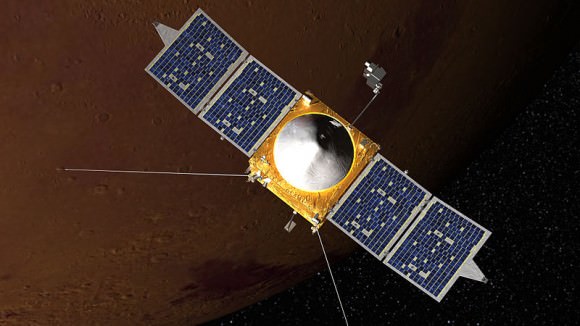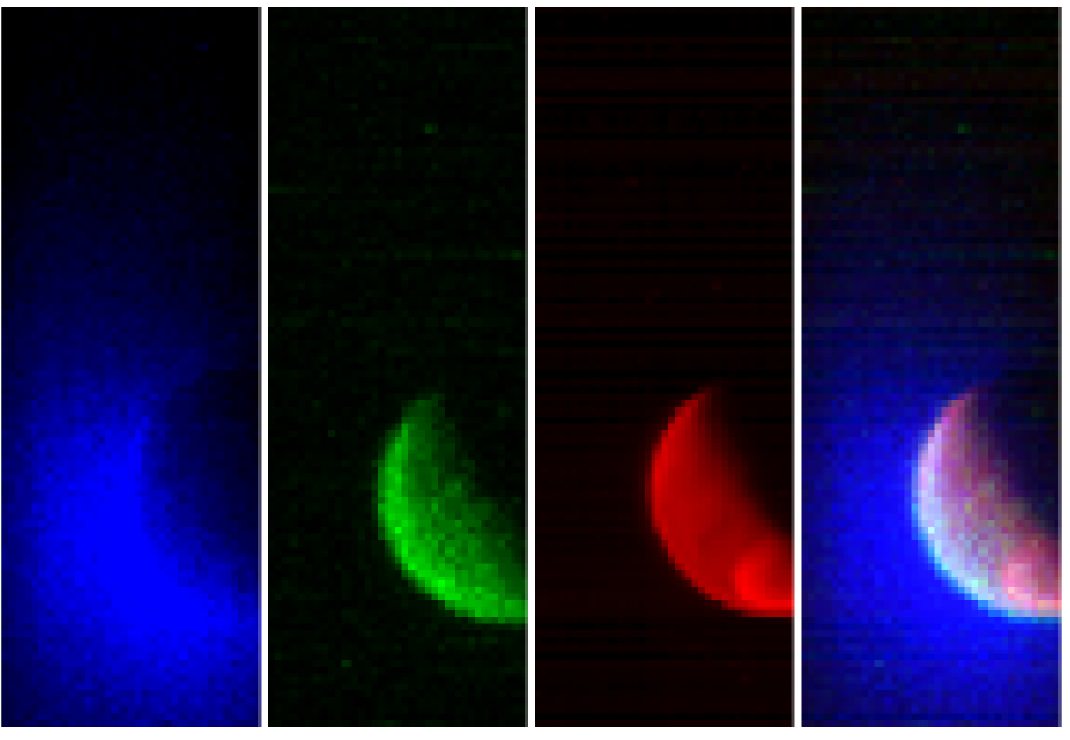Sure is fun to see the Red Planet in different colors! This is what the gases around the Red Planet’s atmosphere look like from NASA’s Mars Atmosphere and Volatile Evolution (MAVEN) spacecraft, which did its first observations on Monday (Sept. 22) — just eight hours after arriving in orbit.
The goal of the spacecraft is to better understand how quickly gases are fleeing the Martian atmosphere, and here you can definitely see a difference between hydrogen (at left) and oxygen (second-to-left). Figuring out how fast the atmosphere escapes could help scientists learn why water appeared to flow freely on the Red Planet’s surface in the distant past.
The hydrogen gas is much lighter and surrounds the planet in a bigger cloud that is so huge it extends beyond the boundaries of the picture at left. The oxygen, which is heavier, is less prone to drifting away and stays closer to the planet. (All images were obtained from an altitude of 22,680 miles or 36,500 kilometers.)

It is believed that the Sun’s radiation pushed hydrogen out of the Martian atmosphere in the planet’s past, thinning it over time. A thicker atmosphere would have allowed water to exist in gullies and perhaps even seas or oceans, but today the atmosphere is too thin for liquid water to survive in large quantities on the surface.
MAVEN is in a commissioning phase that will last until early November, although the spacecraft will take a time-out to do observations of Comet Siding Spring upon the object’s closest approach to the planet Oct. 19. So far, NASA does not believe the comet will pose a huge dust threat to the spacecraft, but MAVEN will be maneuvered to minimize exposure just in case.
Source: University of Colorado Boulder


Elizabeth, do you know if MAVEN took similar image(s) of Earth on her way out to Mars? It would be interesting to compare them. Is the visible ring in that image in the North or South pole region? I see that Mar’s autumnal equinox was on August 17, 2014.